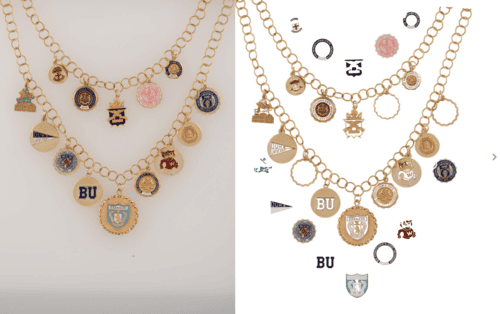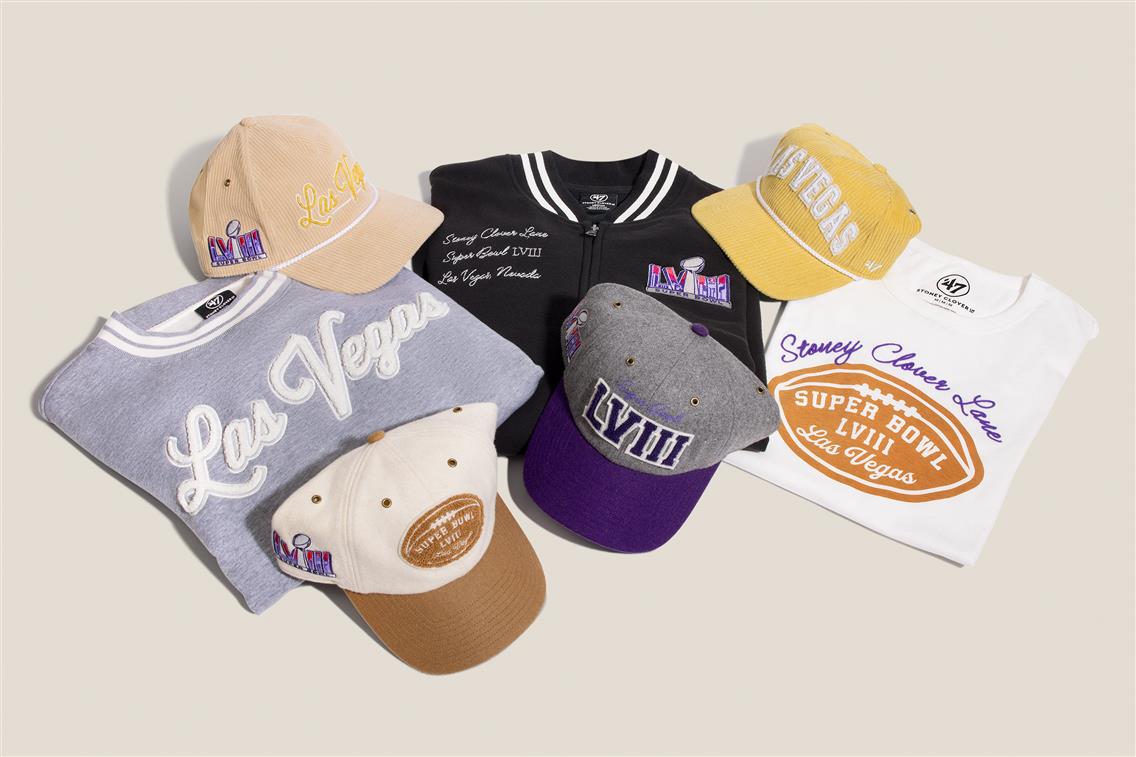Mother's Day E-commerce Marketing Ideas to Win Hearts

Mother's Day Significance for eCommerce
Mother's Day is not just a sales opportunity; it’s a chance for brands to connect emotionally with their audience. Businesses can foster long-term customer loyalty by catering their products for family celebrations, turning simple goods into cherished gifts for your loved ones . This day is particularly significant for eCommerce niches like jewelry, beauty, fashion, home decor, and personalized gifts, which align well with the sentimentality of the occasion.
Consumer spending trends highlight the importance of this holiday, with Americans spending over $35 billion on Mother’s Day in recent years. This makes it the third-largest retail holiday, offering a golden opportunity for brands to boost visibility and revenue while building emotional connections with their customers.
From personalized gifts to curated shopping experiences, let's explore five powerful Mother's Day marketing strategies that can help your brand win hearts — and drive revenue.
Understanding Your Mother's Day Marketing Audience
Mother's Day presents a unique opportunity for brands to connect with a diverse and motivated audience. Understanding this audience is crucial for crafting effective marketing campaigns. Here's a breakdown of the primary demographics involved in Mother's Day shopping:
Adolescents (18+ Years)
Who they buy for: Mothers, stepmothers, and grandmothers.
What they look for: Sentimental gifts, personalized items, and classic Mother’s Day staples like jewelry, beauty sets, and flowers.
Shopping habits: Online shopping dominates this demographic, with a preference for emotional messaging and urgency-driven offers like limited-time deals and fast shipping.
Spouses & Partners
Who they buy for: Their wives, sometimes on behalf of their children.
What they look for: Thoughtful gifts such as jewelry, personalized keepsakes, wellness products, or high-end items.
Shopping habits: Often last-minute shoppers who respond well to curated gift guides and premium options with fast shipping.
Grown-up Couples Buying for Their Parents
Who they buy for: Their own mothers.
What they look for: Luxury gifts, custom keepsakes, or experience-based gifts like spa treatments.
Shopping habits: Tend to plan ahead, so early-bird promotions are effective.
Kids (Influencing Dads or Grandparents)
Who they buy for: Their moms.
What they look for: Handmade gifts or sentimental items marketed as “from the kids.”
Shopping habits: Indirect buyers are influenced by campaigns targeting dads or grandparents with “from the kids” messaging.
Friends & Other Relatives
Who they buy for: Sisters, aunts, mother figures, or close friends who are moms.
What they look for: Thoughtful self-care gifts, spa kits, gourmet treats, or experience-based gifts.
Shopping habits: More personal and relationship-driven; user-generated content (UGC), influencer recommendations, and social proof are effective.
Data-driven insights can further refine your audience targeting. For instance, using demographic segments can help target specific audiences such as fine jewelry buyers, spa enthusiasts, or households with new moms. Additionally, understanding shopping trends, such as the prevalence of early shopping and the desire for quality and personalization, can inform campaign strategies.
By understanding and catering to these diverse audience segments, brands can create impactful Mother’s Day marketing campaigns that resonate deeply with their target audience.
7 Meaningful Mother’s Day Promotion Ideas to Boost Sales
1. Sell Themed Mother's Day Products
Themed product bundles are a great way to provide value while aligning with the spirit of Mother’s Day. For instance, a self-care bundle featuring scented candles, bath salts, and plush robes can appeal to customers looking for thoughtful gifts that promote relaxation. Seasonal packaging further enhances the appeal by adding a festive touch — think pastel-colored boxes, floral patterns, or heartfelt messages on the wrapping.
Highlighting how these products represent love and appreciation is key. Use visual storytelling in your marketing campaigns to show how these items can be part of memorable Mother’s Day celebrations. For example, a campaign could feature a family gifting a spa bundle to their mom as she enjoys a quiet moment of relaxation.
Creating limited-edition items specifically for Mother’s Day adds urgency and exclusivity to your offerings. Jewelry brands, for example, might launch pieces engraved with phrases like “Mom” or “You are my sunshine.” Similarly, clothing brands could introduce matching outfits for mothers and children, which not only evoke sentimentality but also create Instagram-worthy moments. To execute this effectively, timing is critical. Read further and learn how much time you need to prepare a marketing campaign for Mother’s Day.
2. Offer Personalization for a Special Touch
Personalization is another powerful tool for making gifts more meaningful. Allowing customers to engrave or monogram items adds a personal touch that makes the gift feel more thoughtful. Whether it's a piece of jewelry, a keepsake, or home decor, personalized gifts become treasured possessions that can be passed down through generations.
For example, Jo Malone offers a unique in-store engraving and monogramming service for their fragrance bottles and candles. Customers can visit their physical locations, like the Britomart store, where they can use an iPad to customize their purchases with personal messages, initials, or special dates. This hands-on experience not only enhances the value of the gift but also creates an emotional connection between the customer and the brand. Jo Malone’s elegant fonts and bespoke service make their products truly one-of-a-kind treasures.

On the other hand, eCommerce brands like Zara Home provide similar personalization options online. For instance, Zara allows customers to add monograms or custom embroidery to selected home collection items such as towels or linens. This seamless online personalization process caters to customers who prefer shopping from the comfort of their homes while still offering a meaningful and thoughtful gifting experience.

In addition to physical personalization, consider offering digital options like customized digital cards or personalized video messages. These modern touches can be easily shared on social media, allowing customers to express their love and appreciation in a more interactive and shareable way. By integrating both in-store and online personalization services, brands can cater to diverse customer preferences while enhancing the emotional value of their offerings.
3. Curate a Thoughtful Mother's Day Gift Guide
Gift guides solve decision fatigue. Many shoppers don’t know what to buy, so if you make their lives easier, they’ll buy from you. A well-structured Mother’s Day gift guide removes the friction of decision-making, providing buyers with carefully curated options that align with their needs and budget.
A great gift guide taps into consumer psychology by presenting choices in a way that feels intuitive and emotionally compelling. When faced with too many options, shoppers can become overwhelmed and abandon their purchase. A structured guide helps them quickly identify the best fit based on recipient type, price range, or unique preferences, making the decision easier and increasing the likelihood of conversion.
An effective Mother’s Day gift guide should be structured in a way that aligns with how customers think when shopping for gifts. The three most impactful ways to organize your guide are:
- By Recipient Type – Helps buyers choose gifts based on the relationship with the mother figure.
- By Price Tier – Offers clear budget-friendly choices, making the shopping process more efficient.
- By Gift Category – Captures customers who need specific solutions, for example, fast and convenient. While many shoppers plan ahead, a significant portion of Mother’s Day purchases happen last minute. Offering convenient, quick-to-deliver gift options ensures you capture these late buyers instead of losing them to competitors.
How to Optimize a Mother’s Day Gift Guide for Maximum Conversions?
A gift guide should not be a static list of products — it should be a well-designed, visually engaging, and strategically structured experience that actively guides the customer toward making a purchase. Here are some expert techniques for increasing engagement and conversions:
Use High-Quality Lifestyle Imagery:
Product-only images lack emotional appeal. Instead, showcase lifestyle shots that tell a story — a mother unwrapping a gift from her child, a daughter placing a necklace around her mom’s neck, or a husband surprising his wife with a luxurious skincare set. This kind of visual storytelling increases emotional connection and purchase intent.
Leverage Psychological Triggers
- Scarcity & Urgency: Use phrases like “Limited Mother’s Day Edition” or “Only Available for 72 Hours” to create a fear of missing out.
- Social Proof: Include testimonials from past Mother’s Day buyers, such as “My mom loved this necklace! She hasn’t taken it off since Mother’s Day!”
- Personalization: Let customers filter products based on recipient type or budget, making it easier for them to find relevant options.
Implement Interactive Elements
- Quiz-Based Gift Recommendations: A short quiz that suggests the perfect gift based on answers about the recipient’s personality.
- “Complete the Gift” Upsells: Offer add-on suggestions like greeting cards, gift wraps, or additional personalized elements at checkout.
- Augmented Reality Previews: Allowing customers to see a personalized engraving or monogram before purchase can increase conversions.
A well-crafted Mother's Day gift guide does more than just help customers find gifts — it becomes a high-converting sales tool that reduces friction, increases engagement, and boosts revenue.
4. Craft Emotionally Resonant Mother’s Day Marketing Campaigns
Mother’s Day is a day rooted in deep emotional significance. Consumers aren’t simply looking for products; they’re looking for ways to express love, gratitude, and appreciation for the most important women in their lives.
Brands that understand and tap into this emotional connection will create marketing campaigns that don’t just generate sales but forge long-term brand loyalty. While traditional sales tactics like discounts and promotions work, Mother’s Day marketing that prioritizes storytelling, nostalgia, and human connection will always outperform generic sales-driven campaigns. If your brand can make consumers feel something, they’re far more likely to engage, share, and ultimately, purchase.
To craft a successful emotionally resonant campaign, brands must go beyond product features and focus on the human stories behind the purchase. Whether it’s a heartfelt video, a social media campaign celebrating real-life moms, or user-generated content showcasing personal memories, these strategies will help create a campaign that leaves a lasting impact.
One of the most effective ways to connect emotionally with consumers is through video marketing. Video allows brands to evoke nostalgia, warmth, and real-life emotions, making it an ideal format for Mother’s Day campaigns.
How to Do It Effectively:
- Focus on real, relatable experiences: Instead of showcasing a product directly, tell a meaningful story about motherhood, appreciation, or sacrifice.
- Use nostalgia to create an emotional trigger: Flashback scenes, home videos, or heartfelt voiceovers can instantly resonate with audiences.
- Keep it authentic: Overly polished, overly scripted content can feel inauthentic. Use real moments, diverse families, and genuine emotions.
Examples of Emotionally Effective Mother’s Day Videos:
P&G’s “Thank You, Mom” Campaign (Olympics 2012, 2016, 2020)
Focused on the sacrifices moms make for their children, showing athletes thanking their mothers for their support. The campaign became one of the most shared Mother’s Day ads in history, proving the power of emotional storytelling.
Dove’s “Real Moms” Campaign
Highlighted diverse representations of motherhood, breaking stereotypes and showing that motherhood looks different for everyone. The campaign resonated deeply because it felt real and relatable.






Implementation for Your Brand:
- Create a short film showcasing personal stories related to motherhood.
- Make it shareable — keep videos under 60 seconds for Instagram & TikTok and 2-3 minutes for YouTube and website content.
- Partner with Mom Bloggers & Micro-Influencers.
A sales-first approach will always fall flat on Mother’s Day. Instead, the most impactful campaigns focus on emotions.
For brands looking to create visually stunning, emotion-driven campaigns, professional photography and videography are critical. High-quality visuals enhance emotional storytelling, improve ad performance, and increase conversions. If you want to execute a campaign that leaves a lasting impact — choose Lenflash eCommerce visual content studio.
5. Encourage Community Engagement Through Personal Stories
Rather than just promoting products, brands can foster a sense of community by encouraging customers to share personal stories about motherhood, family traditions, and the special moments they associate with their moms.
Engagement-based marketing is powerful for two key reasons:
- It creates an emotional connection with your audience, making your brand feel more relatable and human.
- It generates valuable user-generated content (UGC) that enhances trust, credibility, and social proof.
When customers see real people sharing real experiences, they are far more likely to engage with your brand. A well-executed community-driven Mother’s Day campaign can dramatically increase social media engagement, website visits, and sales.
A successful community engagement strategy requires more than just asking people to tag your brand — it needs a well-structured approach. The best brands lead the conversation, provide clear participation incentives, and ensure seamless content amplification.
Here are the most effective ways to encourage community-driven engagement:
One of the most effective ways to get customers involved is to create a campaign hashtag that invites them to share personal stories about their mothers. This strategy taps into the psychology of nostalgia — one of the strongest emotional triggers in marketing. Create a hashtag like #MyMomMyHero, #MothersDayMoments, or #ThanksMomWith[YourBrand] and ask customers to share their most cherished Mother’s Day memories. Encourage them to post personal stories along with photos or videos, tagging your brand for a chance to be featured. Run a giveaway where the best stories win a special Mother’s Day gift set, store credit, or exclusive VIP perks.
Example: Jewelry brand Pandora successfully leveraged a similar concept by asking customers to share stories about their moms, tagging the brand for a chance to win a personalized charm bracelet. This not only drove engagement but also reinforced Pandora’s brand positioning as a sentimental, gift-worthy purchase.
Consumers are far more likely to connect with you when they see the humans behind your brand. By sharing heartfelt Mother’s Day stories from a founder, employees, or brand ambassadors, you can create an emotional bridge that makes your company feel more genuine and relatable.
Ask team members to share a favorite memory with their mom and post their stories along with photos. Record short, informal video clips of employees talking about their mothers and what they mean to them. Publish a behind-the-scenes blog post or Instagram Stories series featuring employees talking about how they celebrate Mother’s Day.
Example: Skincare brand Glossier is known for incorporating team members into their content strategy. For Mother’s Day, they featured employees’ personal stories and favorite skincare products their moms introduced them to, reinforcing their brand’s emotional storytelling approach.
Feature User-Generated Content (UGC) to Build Trust and Social Proof. User-generated content (UGC) is one of the most powerful marketing assets available to eCommerce brands. Studies show that 92% of consumers trust UGC more than traditional advertising. When people see real customers sharing heartfelt stories about your brand, it builds trust and makes them more likely to purchase.
Example: Fashion retailer Zalando often features user-generated content in their product pages, showing real customers styling their outfits. A similar approach for Mother’s Day would increase engagement, trust, and purchase intent.
Partner with Nano-Influencers to Amplify Community Engagement. Nano-influencers (1,000–10,000 followers) often drive higher engagement and trust because their audiences view them as authentic and relatable. Collaborate with mom bloggers, lifestyle influencers, and family-focused creators to share personal stories about their Mother’s Day traditions. Provide them with a free gift package and ask them to post about how they’ll be using it for Mother’s Day. Encourage influencers to invite their audiences to participate in your Mother’s Day storytelling campaign.
Example: A beauty brand could partner with an influencer who shares a “Get Ready with Mom” video, featuring a Mother’s Day self-care routine using the brand’s skincare products. This taps into emotional storytelling while authentically showcasing products.
Encouraging community participation through personal storytelling, user-generated content, and brand authenticity is one of the most sustainable and effective marketing strategies for Mother’s Day and beyond. Instead of simply pushing promotions, brands that create meaningful conversations around Mother’s Day will forge deeper emotional connections with their audience.
A campaign centered around real people, real stories, and real emotions is not just good for engagement — it builds long-term brand loyalty and trust. And stunning photography and video production can transform stories into powerful marketing assets that drive revenue.
6.Offer Unique Mother's Day Discounts and Deals
Offering unique Mother's Day discounts and deals is a strategic way to attract customers, drive sales, and foster brand loyalty. Here are some strategies to consider:
BOGO (Buy One, Get One) Deals
Implementing BOGO offers can significantly boost sales by encouraging customers to purchase more items. For instance, a jewelry brand could offer a BOGO deal on earrings or necklaces, allowing customers to buy one piece for themselves and gift another to mom.
Free Shipping
Providing free shipping is a powerful incentive, especially for last-minute shoppers. It eliminates a common barrier to purchase and ensures that gifts arrive on time. Consider offering free shipping on orders above a certain amount or on specific Mother's Day-themed products to create a sense of urgency.
VIP Early Access for Loyal Customers
Rewarding loyal customers with early access to Mother's Day deals can strengthen brand loyalty and encourage repeat business. Send exclusive offers to your loyalty program members before the general public, allowing them to shop before items sell out.
Small Gifts
Give complimentary items with purchases above a certain amount or on specific products. This could be a small candle, a gourmet treat, or just a personalized gift card. Providing complimentary items enhances the perceived value of the purchase and leaves a lasting impression on customers.
By implementing these strategies, you can create a compelling Mother's Day campaign and build a loyal customer base by offering unique and thoughtful experiences.
7. Collaborate with Complementary Brands
One often overlooked strategy is collaborating with other brands that share your target audience. By joining forces, you can expand your reach and offer even more value to customers. For example:
- A jewelry brand could partner with a luxury flower company to create a gift set that includes a necklace and a bouquet.
- A skincare brand might collaborate with a wellness company to offer a self-care package featuring beauty products and aromatherapy candles.
- A fashion retailer could team up with an artisanal chocolatier to provide stylish outfits paired with gourmet treats.
Collaborations like these allow you to reach new audiences and enhance the perceived value of your offerings by combining expertise from multiple brands.
The Ideal Mother’s Day Marketing Campaign Timeline
A well-crafted Mother’s Day campaign is only as good as its promotion. You can have the most emotionally resonant storytelling, exclusive product bundles, and high-converting gift guides — but if your audience doesn’t see them in time or in the right context, your sales will underperform.
Mother’s Day shoppers tend to fall into two categories: early planners and last-minute buyers. A strong promotional strategy captures both groups at the right moment, ensuring maximum reach, engagement, and conversions.
To execute a high-impact Mother’s Day marketing campaign, brands must strategically time their content creation, optimize their stock and discounts, leverage paid and organic social media, think about collaborations, personalize their email marketing, and enhance the shopping experience with small but impactful details.
10–12 Weeks Before Mother’s Day: Foundation & Strategy Development
Visual content creation and campaign strategy development require more time than many brands anticipate. A truly impactful Mother’s Day marketing campaign isn’t something that can be thrown together in a few weeks. It demands careful planning, professional content production, and strategic execution across multiple channels.
Many successful brands plan Mother’s Day marketing as early as Q1 because holiday marketing isn’t just about running ads — it’s about storytelling, branding, and creating experiences that feel intentional.
If you rely on professional photography, video production, influencer collaborations, or PR efforts, these require a significant lead time for concept development, production, and distribution.
Ad costs for Mother’s Day spike as the holiday gets closer, so brands that plan and schedule ad buys early can secure lower CPMs (cost per 1,000 impressions).
Key Actions:
- Define the campaign’s core messaging, storytelling angle, and emotional appeal.
Together with a creative director, plan the types of content needed (lifestyle photography, short-form video, product photography, CGI animation, UGC integration, influencer partnerships, and so on). - Create a content calendar covering social media, email marketing, blog posts, and paid ad placements.
- A producer briefs photographers, videographers, and designers to begin production.
- PR begins PR outreach and influencer partnerships to secure long-lead collaborations.
- Marketers test Mother’s Day keyword strategies for SEO and paid advertising campaigns.
6–10 Weeks Before Mother’s Day: Content Production & Asset Development
Professional product photography, lifestyle imagery, and video content take time to produce and edit. You need enough time for revision cycles and quality control before launching marketing materials. Social media platforms favor native, engaging content — not rushed, overly sales-oriented last-minute ad creatives.
Key Actions:
- A creative team finalizes product photography and video shoots.
- They edit and optimize visual content for web, social media, email, and paid advertising.
- Marketers create ad creatives for Facebook, Instagram, Pinterest, TikTok, and Google Ads.
- Influencers film short-form videos (Reels, TikToks, YouTube Shorts)
- Marketers develop Mother’s Day gift guides optimized for SEO and segment email lists based on past purchase behavior to prepare.
4–6 Weeks Before Mother’s Day: Soft Launch & Pre-Marketing Phase
Many shoppers, especially those looking for custom or luxury gifts, start buying early.
Early-bird campaigns can capture attention before competitors flood the market with promotions. Brands that introduce Mother’s Day messaging early can warm up audiences for bigger promotions later.
Key Actions:
- Launch Mother’s Day collection pages and curated gift guides.
- Run teaser campaigns on social media (behind-the-scenes, “coming soon” posts, influencer sneak peeks).
- Send first email marketing campaigns introducing Mother’s Day collections.
- Begin early-bird discounts for personalized or pre-order gifts.
- Start retargeting ads for people who have visited your website but haven’t purchased yet.
2–4 Weeks Before Mother’s Day: Campaign Peak & Full Promotions
This is the critical window for high-intent buyers, as most Mother’s Day shoppers begin purchasing during this time. Ad costs increase as more brands compete for attention and conversions, making early audience-building efforts (email lists, organic social media engagement) more valuable. Media like Vouge finalize their Mother’s Day gift guides, meaning PR placements should already be secured.
Key Actions:
- Launch full-scale advertising campaigns across social media, search, and display networks.
- Run giveaways and contests to drive engagement.
- Feature user-generated content (UGC) from customers sharing their favorite Mother’s Day memories.
- Send email marketing sequences with product recommendations based on past purchases.
- Optimize website for fast checkout, mobile-first experiences, and high-intent buyers.
Final Weeks Before Mother’s Day: Last-Minute Push & Urgency Marketing
Many shoppers wait until the last minute, making this phase essential for capturing procrastinators. Shipping deadlines create natural urgency, which increases conversions. Digital gifts (e-gift cards, instant downloads, or online experiences) perform exceptionally well in the final days.
Key Actions:
- Run countdown-based ads and content: “Only 3 Days Left for Guaranteed Mother’s Day Delivery!”
- Offer same-day delivery or in-store pickup promotions.
- Feature digital gifts prominently for last-minute shoppers.
Send final reminder emails with subject lines like:
“Still Need a Mother’s Day Gift? We’ve Got You Covered.”
“Final Hours: Last Chance to Order for Mother’s Day.”
Why This Timeline is Essential for Success
A planned-ahead Mother’s Day marketing strategy ensures that brands can:
- Produce high-quality, professional visuals that stand out.
- Develop storytelling-driven campaigns that build emotional connections.
- Capture early-bird shoppers while still maximizing last-minute conversions.
- Avoid the last-minute rush that leads to rushed, ineffective promotions.
Solidify Your Mother’s Day Marketing Efforts with Stunning Visuals
Consumers are drawn to brands that help them express love and appreciation in a meaningful way. However, in an oversaturated market, where every business is competing for attention, visual storytelling is what makes a brand stand out.
High-quality product photography and video content are not just supporting elements — they are the foundation of successful eCommerce marketing. Emotionally compelling imagery captures attention, communicates brand value, and drives conversions. Flat product shots or uninspiring visuals won’t evoke the emotions necessary to push shoppers toward making a purchase. Instead, customers respond to lifestyle imagery, cinematic product storytelling, and visuals that showcase the depth of the gifting experience.
This is where Lenflash’s professional eCommerce photography and video services make a difference. Our expertise ensures that your Mother’s Day marketing campaign isn’t just seen — it’s felt. We help brands create:
- Luxury product imagery that highlights texture, craftsmanship, and details.
- Lifestyle-driven storytelling that connects with buyers on an emotional level.
- Engaging video content that elevates brand perception and increases retention.
Order LenFlash photography and videography services today to ensure your brand owns the spotlight the upcoming Mother’s Day — because when it comes to marketing, the brands that tell the best visual stories always win.















